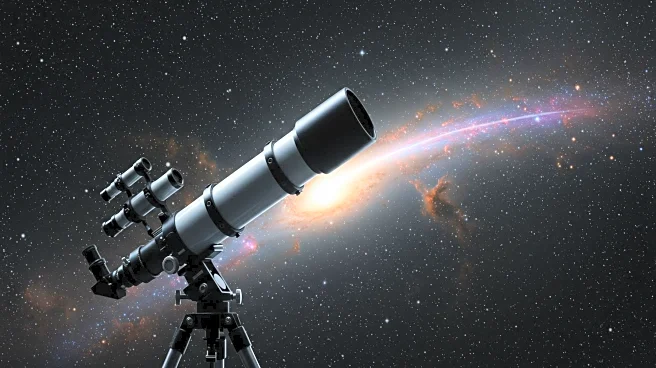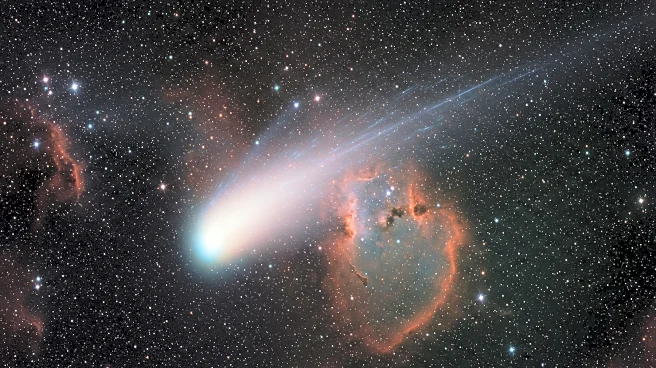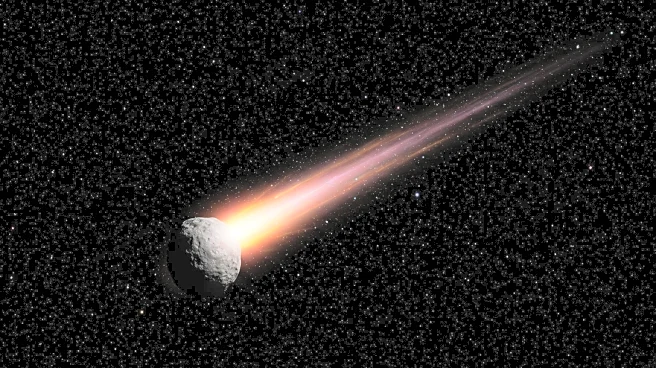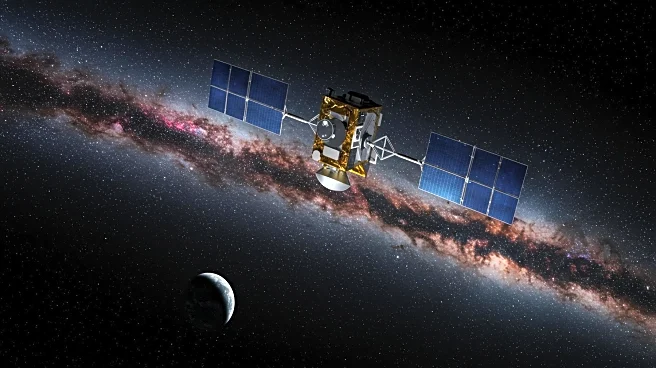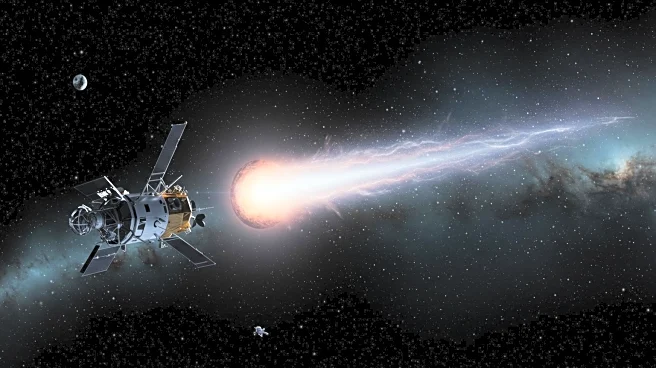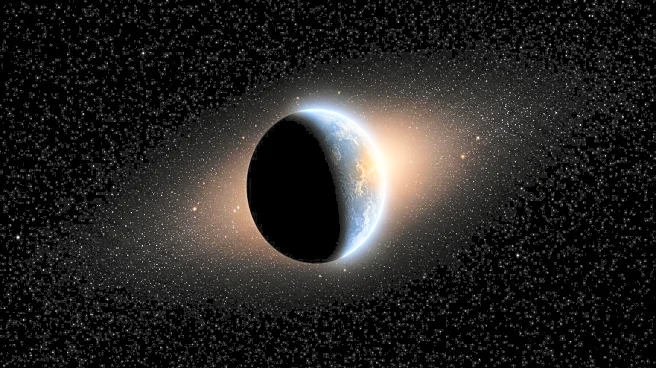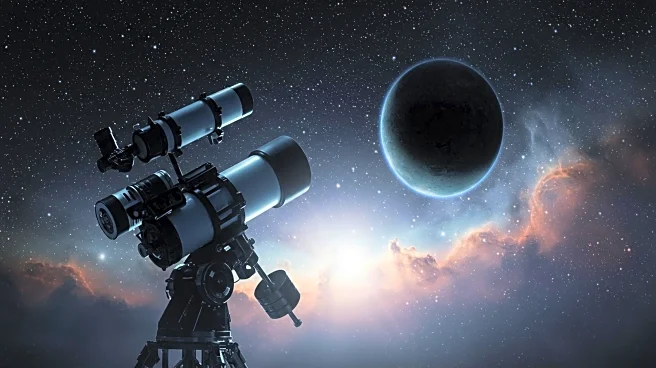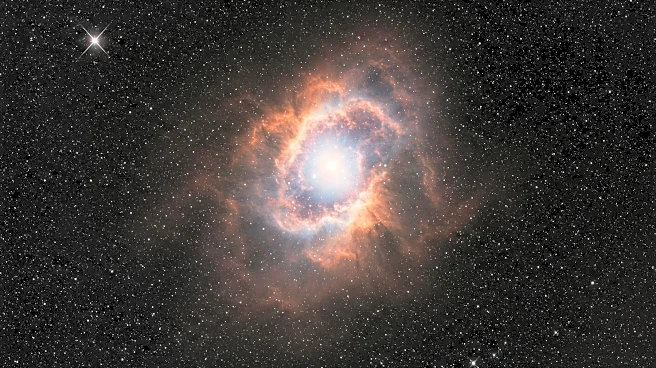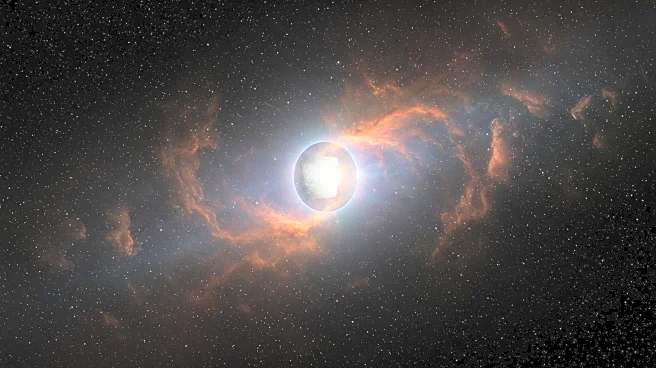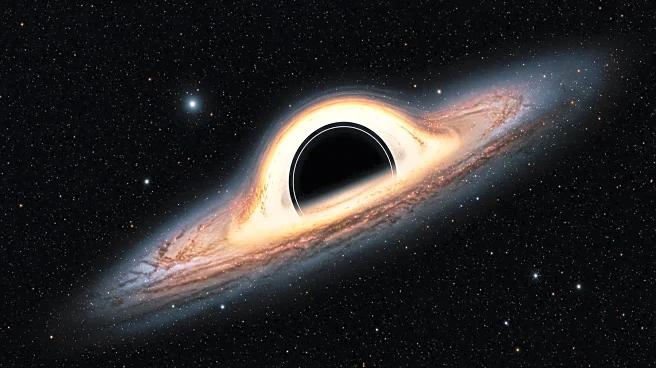What's Happening?
The Hubble Space Telescope has provided the sharpest images yet of the interstellar comet 3I/ATLAS, offering new insights into its size and composition. This comet, the third interstellar object observed passing through our solar system, has sparked significant interest among astronomers. Initial estimates from ground-based observatories suggested the comet's nucleus could be between 10 to 20 kilometers in diameter. However, Hubble's observations have revised this estimate, suggesting an upper limit of 5.6 kilometers, with the possibility of the nucleus being as small as 320 meters. The comet is currently surrounded by a cloud of dust, ice, and gas, known as its coma, which obscures the solid nucleus from direct observation.
Why It's Important?
The study of interstellar objects like 3I/ATLAS is crucial for understanding the composition and behavior of celestial bodies that originate outside our solar system. These observations can provide valuable data on the formation and evolution of comets, offering insights into the conditions of other star systems. The revised size estimates of 3I/ATLAS's nucleus could influence theories about the formation and characteristics of interstellar comets. Additionally, the ability to capture detailed images of such distant objects demonstrates the capabilities of modern astronomical technology, potentially paving the way for future discoveries.
What's Next?
Astronomers are expected to continue observing 3I/ATLAS as it travels through the solar system. With limited time before the comet exits the solar system, researchers are likely to employ various telescopes and instruments to gather as much data as possible. These efforts may include further analysis of the comet's composition and trajectory, which could provide additional insights into its origin and the interstellar environment. The findings from these observations may also contribute to the broader understanding of interstellar objects and their interactions with our solar system.
